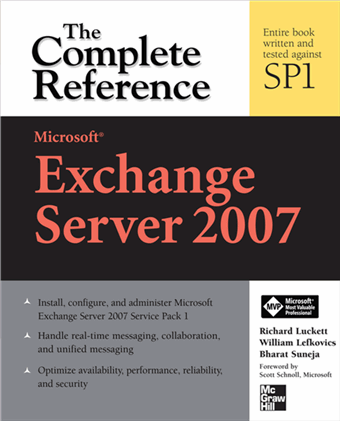RFC 2821 specifies how address literals can be used to reach recipients - particularly useful when DNS resolution doesn't work for a particular domain or host. This is a literal form of the address which can be used as an alternative to the domain name. For IPv4 addresses, the address literal format is localpart@[1.2.3.4] - where 1.2.3.4 is the IP address of the host.
Exchange Server 2003 allows usage of address literals in Recipient Policy. You can create a Recipient Policy rule and insert the IP address (of your Exchange server) enclosed in square brackets e.g. "@[1.2.3.4]" to use the alias, or "%1g.%s@[1.2.3.4]" to use first initial and last name (depending upon the naming convention for primary email addresses).
Not all recipients need to be reachable using address literals, though it certainly doesn't hurt if they are. (It may get a tad too complicated in anything but single server environments... ). It's a good idea to have at least the common accounts used to report email problems - like postmaster (an RFC requirement), abuse, et al reachable.
If you create a Recipient Policy that doesn't apply to any users, you can then add one-off email addresses to accounts like postmaster. The Recipient Policy tells Exchange it needs to receive email for a certain domain and whether it is authoritative for that domain. (Yes, the literal IPv4 addresses get treated like domains by Exchange.)
If you decide to take this route, you will need to add the individual email addresses to user accounts using ADSIEdit - the Email Addresses tab in AD Users & Computers console does not let you add email addresses with square brackets.
If your servers are behind a NAT router/firewall, it makes sense to add both the internal and external (NATted) IP address of the host to the Recipient Policy.
Exchange Server 2003 allows usage of address literals in Recipient Policy. You can create a Recipient Policy rule and insert the IP address (of your Exchange server) enclosed in square brackets e.g. "@[1.2.3.4]" to use the alias, or "%1g.%s@[1.2.3.4]" to use first initial and last name (depending upon the naming convention for primary email addresses).
Not all recipients need to be reachable using address literals, though it certainly doesn't hurt if they are. (It may get a tad too complicated in anything but single server environments... ). It's a good idea to have at least the common accounts used to report email problems - like postmaster (an RFC requirement), abuse, et al reachable.
If you create a Recipient Policy that doesn't apply to any users, you can then add one-off email addresses to accounts like postmaster. The Recipient Policy tells Exchange it needs to receive email for a certain domain and whether it is authoritative for that domain. (Yes, the literal IPv4 addresses get treated like domains by Exchange.)
If you decide to take this route, you will need to add the individual email addresses to user accounts using ADSIEdit - the Email Addresses tab in AD Users & Computers console does not let you add email addresses with square brackets.
If your servers are behind a NAT router/firewall, it makes sense to add both the internal and external (NATted) IP address of the host to the Recipient Policy.
Labels: SMTP

 Exchangepedia Blog is read by visitors from all 50 US States and 150 countries world-wide
Exchangepedia Blog is read by visitors from all 50 US States and 150 countries world-wide



5 Comments:
Hello,
Will this also work for Exchange 2007?
Our DELL DRAC's can't send mail anymore using a E2K7 hub transport because it considers @[1.2.3.4] to be an invalid address and rejects it.
Cheers
Exchange Server 2007 does not support address literals.
Bharat
Hello,
we have the same problem with IBM Bladecenter AMM and Exchange 2007. Do you know any workaround to solve these problem?
Regards Thomas
Hello,
We are also using IBM Blades and just upgraded to Exchange 2007.
Worked around it by relaying AMM alerts to a Linux mail server instead.
GMAIL seems to accept the alerts from AMM though.
regards, BEN
Hi,
I recently stumbled across that problem (or at least a very similar one) while trying to talk our Exchange 2007 Server into accepting Mails for address literals. This seems to be impossible while the literal is written with enclosing square brackets. We do need this form of direct adressing to let Sendmail forwrd specific Mails/Domains directly to our internal Exchange.
To solve this problem I tried to add an unenclosed IP-Adress to the list of accepted Domains. This works without any complaints. You will just have to configure your other systems (Sendmail in our case) to relay Mails for @[1.2.3.4] directly to 1.2.3.4. In Sendmail you could use the Mailertable for example. Should be working with postfix' transport file, too.
Regards, Matthias
Post a Comment
Links to this post:
Create a Link
<< Home